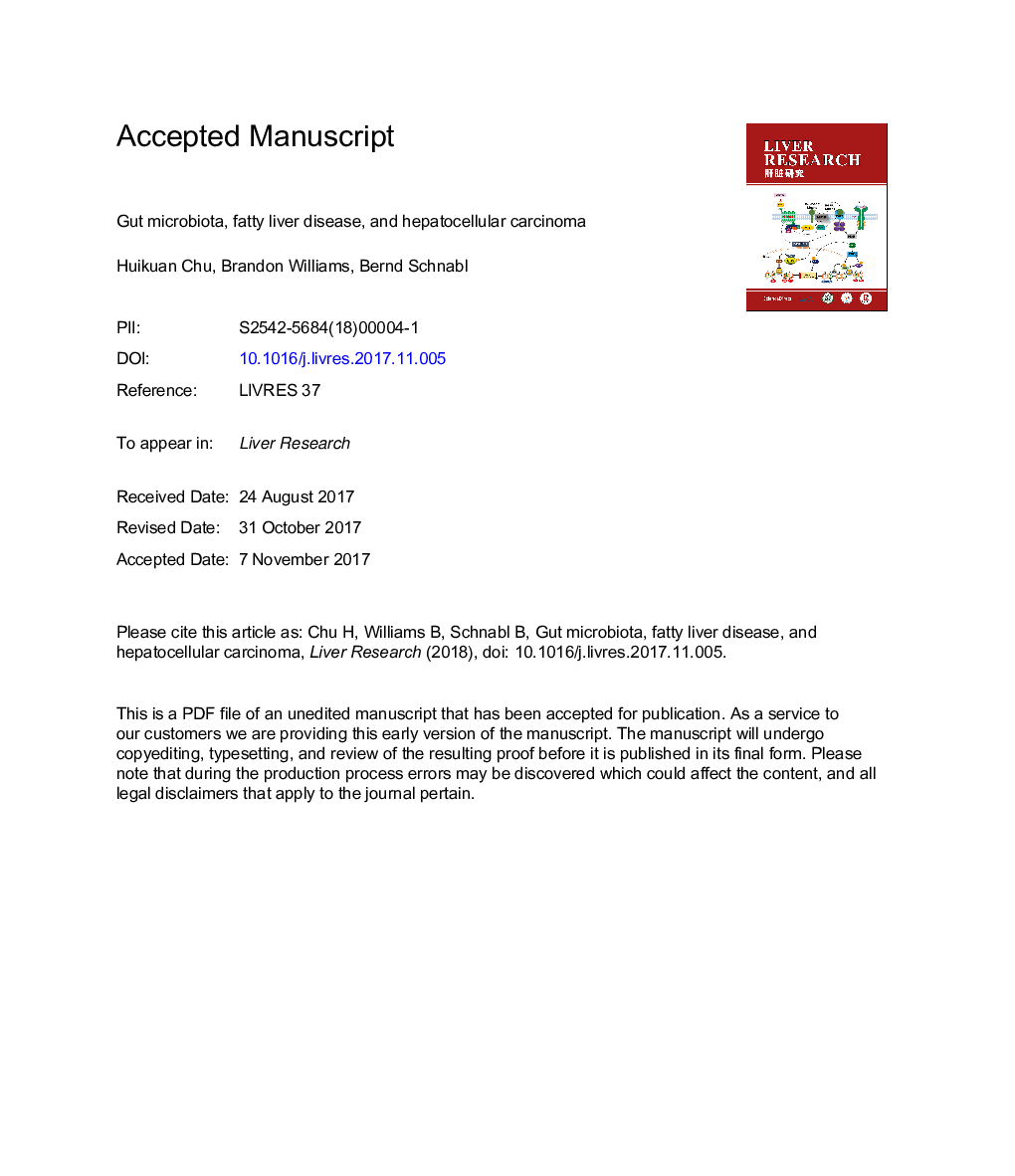| کد مقاله | کد نشریه | سال انتشار | مقاله انگلیسی | نسخه تمام متن |
|---|---|---|---|---|
| 8925920 | 1643639 | 2018 | 32 صفحه PDF | دانلود رایگان |
عنوان انگلیسی مقاله ISI
Gut microbiota, fatty liver disease, and hepatocellular carcinoma
ترجمه فارسی عنوان
میکروبیولوژیک روده، بیماری کبد چرب و کارسینوم سلولهای سرطانی
دانلود مقاله + سفارش ترجمه
دانلود مقاله ISI انگلیسی
رایگان برای ایرانیان
کلمات کلیدی
MetagenomeNon-alcoholic steatohepatitis (NASH) - استاتو هپاتیت غیر الکلی (NASH)Fatty liver disease - بیماری کبدی چربNon-alcoholic fatty liver disease (NAFLD) - بیماری کبدی چرب غیر الکلی (NAFLD)Metabolome - متابولومGut microbiota - میکروبی خوب استintestinal microbiome - میکروبیوم رودهHepatocellular carcinoma (HCC) - کارسینوم سلولهای خونی (HCC)
موضوعات مرتبط
علوم پزشکی و سلامت
پزشکی و دندانپزشکی
کبدشناسی
چکیده انگلیسی
Intestinal bacteria contribute to the pathogenesis of non-alcoholic fatty liver disease (NAFLD). Recently developed microbial profiling techniques are beginning to shed light on the nature of the changes in the gut microbiota that accompany NAFLD and non-alcoholic steatohepatitis (NASH). In this review, we summarize the role of gut microbiota in the development of NAFLD, NASH, and hepatocellular carcinoma (HCC). We highlight the mechanisms by which gut microbiota contribute to NAFLD/NASH, including through alterations in gut epithelial permeability, choline metabolism, endogenous alcohol production, release of inflammatory cytokines, regulation of hepatic Toll-like receptor (TLR), and bile acid metabolism. In addition, we analyze possible mechanisms for enhanced hepatic carcinogenesis, including alterations in bile acid metabolism, release of inflammatory cytokines, and expression of TLR-4. Finally, we describe therapeutic approaches for NAFLD/NASH and preventive strategies for HCC involving modulation of the intestinal microbiota or affected host pathways. Although recent studies have provided useful information, large-scale prospective studies are required to better characterize the intestinal microbiota and metabolome, in order to demonstrate a causative role for changes in the gut microbiota in the etiology of NAFLD/NASH, to identify new therapeutic strategies for NAFLD/NASH, and to develop more effective methods of preventing HCC.
ناشر
Database: Elsevier - ScienceDirect (ساینس دایرکت)
Journal: Liver Research - Volume 2, Issue 1, March 2018, Pages 43-51
Journal: Liver Research - Volume 2, Issue 1, March 2018, Pages 43-51
نویسندگان
Huikuan Chu, Brandon Williams, Bernd Schnabl,
